Google Pixel 10 Pro XL vs iPhone 16 Pro Max: here we go!
Google's Pixel 10 Pro XL is here! Here's how its improvements stack up against the iPhone 16 Pro Max
We may earn a commission if you make a purchase from the links on this page.

Intro
The Google Pixel 10 Pro XL is now real and in our hands. We've run the tests, we've doomscrolled through Instagram, we've checked out the AI shenanigans and Material Design 3. And, as we wait for the iPhone 17 Pro Max to begin shipping — we can still compare Google's best to the best iPhone that we have right now. That being the iPhone 16 Pro Max, which is about to be officially dethroned.
Pixel 10 Pro XL vs iPhone 16 Pro Max differences:
| Pixel 10 Pro XL | iPhone 16 Pro Max |
|---|---|
| Almost no difference from last year, flat sides with curved corners | Also flat sides and curved corners, titanium coating |
| Horizontal camera bar on the back | The signature camera square at the corner |
| 232 g | 227 g |
| 6.8-inch Super Actua OLED display | 6.9-inch OLED screen with anti-reflective coating |
| 3,300 nits of peak brightness | 2,000 nits of peak brightness |
| Google Tensor G5 (3nm TSMC-made) | Apple A18 Pro (3nm) |
| 16GB of RAM | 8GB of RAM |
| 256GB, 512GB, 1TB storage variants | 256GB, 512GB, and 1TB versions |
| 50MP+48MP+48MP rear camera system | 48MP+12MP+48MP rear camera system |
| 42MP selfie camera | 12MP front-facing camera |
| 5,200 mAh battery | 4,685 mAh battery |
| 45W wired charging | 27W wired |
| Qi2 25W "Pixelsnap" wireless charging | 25W MagSafe / Qi2 |
| Android 16 | iOS 18 |
Table of Contents:
Read more:
Design and Size
Same Pixel look. Same iPhone feel
If you’ve seen the Pixel 9 Pro XL, chances are you have a good idea of what the Pixel 10 Pro XL looks like. Google is sticking to its guns with that iconic camera bar and flat design language. It's instantly recognizable and feels pretty good in the hand.
The Pixel 10 Pro XL does grow slightly (emphasis on slightly) heavier because of its bigger battery and Qi2 magnets added to the phone. You could say it's a tiny bit heavier than the iPhone 16 Pro Max (232 g vs 227 g), but a difference of 5 grams is not really noticeable. It's apparently still made of aluminum, though it has the shiny finishes yet again.
Meanwhile, Apple’s iPhone 16 Pro Max is pulling some subtle but meaningful tricks of its own. It came with slightly slimmer bezels, and is a touch lighter thanks to that titanium frame that Apple introduced in 2023. The general footprint stays familiar, but makes things a bit more comples with two extra buttons — the Action Button and Camera Control buttons, if you recall.
The Pixel 10 Pro XL does grow slightly (emphasis on slightly) heavier because of its bigger battery and Qi2 magnets added to the phone. You could say it's a tiny bit heavier than the iPhone 16 Pro Max (232 g vs 227 g), but a difference of 5 grams is not really noticeable. It's apparently still made of aluminum, though it has the shiny finishes yet again.
| Pixel 10 Pro XL | iPhone 16 Pro Max |
|---|---|
| Thickness 8.5mm | Thickness 8.25mm |
| Weight 232 gr | Weight 227 gr |
Both phones bring that flagship heft and premium feel, both with IP68 water- and dust-resistance (because of course they would have it), and both should be built like tanks.
Like every self-respecting "Pro" product, the Pixel 10 Pro XL comes in more muted and grounded colors — not vibrant and saturated. These are Moonstone (gray-ish), Jade (green-ish), Porcelain (white-ish), and Obsidian (dark gray to black). The iPhone 16 Pro Max is similar with its serious-looking Desert Titanium, Natural Titanium, White Titanium, and Black Titanium.
Display Differences
Two top-tier displays walk into a bar…
The Pixel 10 Pro XL sports a 6.8-inch Super Actua OLED display, pushing 3,300 nits of peak brightness. Super Actua is Google's tech that makes sure that the colors don't get skewed when you boost brightness — that's a good thing. It also has a 1-120Hz variable refresh rate, beautifully thin bezels, and that vibrant Pixel color tuning.
The iPhone 16 Pro Max? We know it — a 6.9-inch Super Retina XDR OLED (say that 10 times fast) with all the usual Apple punch: ultra-smooth 120Hz ProMotion, industry staple calibration, and a brightness that combats the reflections of the summer sun. But it hits 2,000 nits peak, so much less bragging rights.
The iPhone 16 Pro Max? We know it — a 6.9-inch Super Retina XDR OLED (say that 10 times fast) with all the usual Apple punch: ultra-smooth 120Hz ProMotion, industry staple calibration, and a brightness that combats the reflections of the summer sun. But it hits 2,000 nits peak, so much less bragging rights.
You should be happy with both displays, though it's worth noting that the Pixels — being Android and all — do give you some fine controls over color calibration, so you can boost the saturation if that's what you prefer.
| Pixel 10 Pro XL | iPhone 16 Pro Max |
|---|---|
| Size 6.8-inch | Size 6.9-inch |
| Peak brightness 3,300 nits | Peak brightness 2,000 nits |
The Pixel has higher peak brightness and also measures higher at 20% APL and fullscreen brightness. So, hands down it's the brighter display. The iPhone does have its sub-nit minimum brightness going for it — it's a much better bedside buddy. The Pixels' colors also measure closer to target, while the iPhone is skewed more towards warm yellows.
With blue light filters and live calibrations based on ambience, both of these screens look good and, more importantly, are softer on the eyes.
Performance and Software
Tensor enters the 3nm arena. Apple’s already waiting there.
For the first time ever, Google’s Tensor chip doesn't piggyback off Samsung’s Exynos legacy. The new Tensor G5 is a fully custom SoC, manufactured by TSMC on a 3nm process — the same cutting-edge tech Apple’s already using in its A-series chips.
This could be huge for Pixel. Google states a 34% improvement in CPU speed, which was much needed.
The iPhone 16 Pro Max, on the other hand, holds the A18 Pro — a chip we are well acquainted with. Performance is world-class, with the minor caveat that the huge scores drop fast when it heats up and is forced to throttle (they still drop to fairly high numbers, mind you). We don't have high hopes that the Tensor would rival the A18 Pro in direct raw power — Google's silicon has always been about the AI cores and image processing cores, assisting the general function of the Google features on the stock Pixel Android.
| Pixel 10 Pro XL | iPhone 16 Pro Max |
|---|---|
| Chipset Tensor G5 3nm | Chipset Apple A18 Pro 3nm |
| Memory 16GB | Memory 8GB |
| Storage 256GB 512GB 1TB | Storage 256GB 512GB 1TB |
In both multi-core and single-core, we can see that the Tensor G5 is still struggling. The A18 Pro is a good 30% ahead. The Tensor is probably sweating at the arrival of the A19 Pro.
GPU Performance
The same story goes with GPU. It's worth noting that the iPhone only hits that 4.5k score for one cycle of the stress test before throttling. But when slowing down, it still settles at the top score of the Pixel.
While the Pixel might dial that RAM up to 16GB, Apple is still playing it cool at 8GB. iPhones typically don't come with a lot of RAM and the entire lineup was basically "forced" to upgrade, kicking and screaming, to a minimum of 8GB because of AI functionality reasons. We guess that's one good thing about the current AI craze.
Android 16 is also dropping with the new Pixel 10 series, with new AI features. Most prominent is the new Magic Cue — on-device AI that will analyze content in real time and give you suggestions and action buttons. Like relevant Quick replies in Messages — it'll intelligently suggest answers to questions like "Where are we meeting next Saturday?", by digging through your Calendar app, for example. You can disable it or set up which apps and details it has access to.
Other AI features include Call Screening improvements, where it can take a message when you reject a call, or more people in the Add Me feature, photo editing by voice alone (remove the glare, add birds in the sky), and some behind-the scenes stuff. All coming on release.
iOS 18 on the iPhone 16 Pro Max has now reached its final form — not the promised form. While we did get the ChatGPT integration, AI text editing features, image editing and even audio editing, the hotly anticipated Siri upgrade has been postponed indefinitely. But the good news is that it should be getting updates at least until late 2029. The phone is now eligible for iOS 26 (not a leap in generations, Apple changed the numbering scheme), which introduces the all-new Liquid Glass look.
Camera
One's a precision shooter. The other’s a computational wizard.
Pixel 10 Pro XL is sticking with the tried-and-true camera setup from last year:
- 50MP main
- 48MP ultra-wide
- 48MP 5x periscope telephoto
- 42MP selfie
The big upgrade here is that the Google Super Res zoom has... grown. Now called Pro Res Zoom, it reaches up to 100x, from last year's 30x. The iPhone 16 Pro Max still taps out at 25x.
The iPhone 16 Pro Max did get an upgrade — it was the final part of the big camera overhaul, bringing the ultrawide camera up to 48MP to match the main camera. It now has:
- 48MP main
- 48MP ultra-wide
- 12MP 5x periscope telephoto
- 12MP selfie
Add in Apple’s cinematic video mastery and seamless color science, and you’ve got a mobile camera built for content creators. iPhones are currently hailed as the smartphone to beat specifically for video recording, due to their stabilization, detail, framerate smoothness, and extra features and app ecosystem.
Of course, Google did state that the Pixels are now excellent for that as well. Well, how did our tests go?
PhoneArena Camera Score:
For photos, the phones are really, really close. A difference of 3 points is pretty negligible, and is down to fine details or overall camera app experience. The case with the Pixel 10 Pro XL here is that its short- to mid-range zoom is just not great, with visible artifacts and oversharpening. The same goes for its Portrait Mode, which has been improved but is still not on the level of the iPhones.
The same goes for video — while the main camera produces good detail and stable footage, the sidekicks drag the score down a bit. The ultra-wide camera and zoom camera's details and exposure are not as dependable as on the iPhone 16 Pro Max. Again — small score difference.
Main Camera
In outdoor photos, with good light, these can trade blow for blow. In the example above, the Pixel gave us a bit more of a contrasty, saturated photo, with some more fine detail. Then again, in the gallery below, you may find a couple of photos where the iPhone had the upper hand. At the end, whichever one of these you choose, their main cameras are very much comparable.
The story is a bit different when moving into a low light scenario. No complaints about the Pixel's details and colors, but the iPhone does capture slightly better dynamics, with clear highlights, midtones, and shadows, whereas the Pixel 10 Pro XL kind of washes out highlights.
Zoom Quality
Both of these phones have 5x zoom lenses and use them as a stepping stone when you want to go beyond. The iPhone 16 Pro Max maxes out at 25x, the Pixel 10 Pro XL can now go up to 100x, at which point it offers up reconstructed AI imagery. But at 10x we get what you are used to — good old camera algorithms, cleaning up some noise and sharpening some details. The Pixel photo looks a bit too smooth, with noise reduction going a little overboard, the iPhone 16 Pro Max photo has some grains present, so a bit less clarity. The way they interpreted the indoor light cast is very different, too. In this case, the Pixel is closer to reality.
Ultra-wide Camera
This ultra-wide sample was taken in the same area as above, and it's interesting to see that the color representation has flipped. This time around, the iPhone's ultra-wide photo is closer to the real colors. Its details and contrast are also a bit easier on the eye. The Pixel sample looks a bit too HDR-y, too bright, the white walls are leaning towards blue and the warmer colors are slightly desaturated.
Selfies
Both phones produce pretty sharp selfies with good colors and skintone. But the iPhone 16 Pro Max's contrast and dynamics are dialed up. When comparing them directly like this, it almost looks like the Pixel photo has a transparent blanket over it.
More Camera Samples
Battery Life and Charging
No revolutions. Just reliable power.
Pixel 10 Pro XL comes with a slightly bigger battery, around 5,200 mAh in size. It also ups its charging speeds — 45W on the wire now, and 25W wirelessly. The latter is all thanks to the new Qi2.2 support. That's real Qi2 — with the magnets and all. Google is calling it Pixelsnap and introducing an ecosystem of chargers and stands. Yes, a lot like Apple's MagSafe, which also now delivers 25W on the iPhone 16 Pro Max.
PhoneArena Battery and Charging Test Results:
While the Pixel did get improvements in battery capacity and efficiency, it still crumbles when it comes to high-performance apps, like 3D games. For video streaming, both phones are on par, and web browsing is dependable on both, though the iPhone will give you a couple more hours. In general, despite having a smaller battery, the iPhone and its iOS optimizations are very hard to beat nowadays.
Audio Quality and Haptics
To get the haptics out of the way — both of these flagships have had precise, and strong vibration engines for years now. And they are proud of it, with both Android and iOS having little clicks and taps here and there throughout the UI, to give you nice, satisfying feedback.
For audio, both sport stereo speakers with wide sound, pretty good volume, and a nice representation of the EQ spectrum. The iPhone sounds a bit more scooped but deeper. The Pixel has some more mids, but less depth. You'll like both of them.
Specs Comparison
Here's how the Pixel 10 Pro XL and the iPhone 16 Pro Max specs compare.
| Pixel 10 Pro XL | iPhone 16 Pro Max |
|---|---|
| Size, weight 162.8 x 76.6 x 8.5 mm 232 g | Size, weight 163.0 x 77.6 x 8.25 mm 227 g |
| Screen 6.8" OLED 1-120Hz 3,000 nits | Screen 6.9" OLED 1-120Hz 2,000 nits |
| Processor Google Tensor G5 3nm | Processor Apple A18 Pro 3nm |
| Versions: 16GB/256GB 16GB/512GB 16GB/1TB LPDDR5 | Versions: 8GB/256GB 8GB/512GB 8GB/1TB LPDDR5 |
| Cameras: 50MP, F1.68 main 48MP, F1.7 ultra-wide 48MP, F2.8 5X zoom, 100x Pro Res Zoom 42MP front | Cameras: 48MP main, F1.8 48MP ultra-wide, F2.2 12MP 5X zoom, F2.8, 25x digital max 12MP front |
| Battery: 5,200 mAh | Battery: 4,685 mAh |
| Charging: USB-C 45W wired 25W Qi2 Pixelsnap | Charging: USB-C 27W wired 25W MagSafe |
Summary
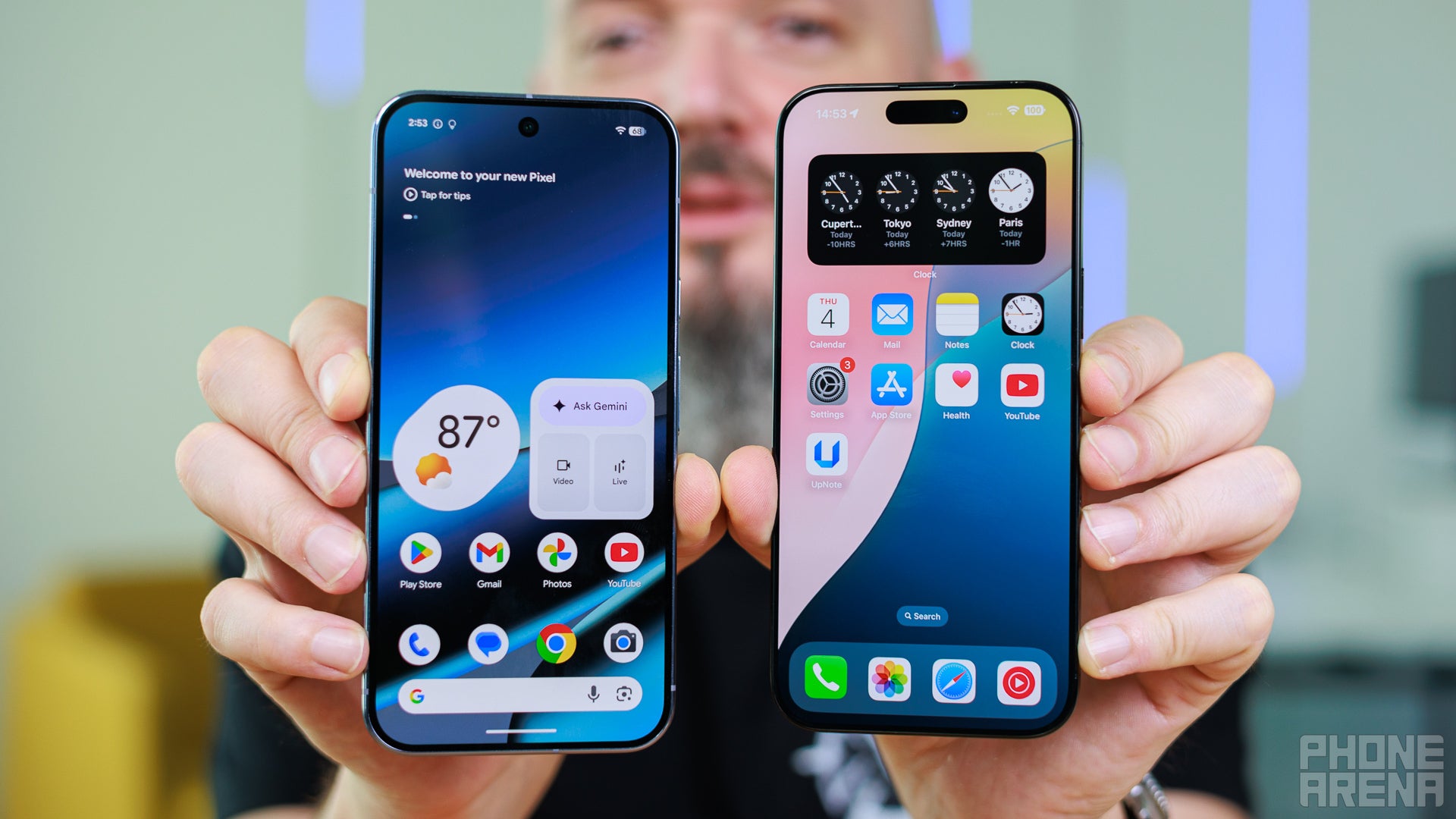
The Pixel 10 Pro XL is a refined, upgraded, typical yet worthy Google flagship. Custom silicon now upgraded to a 3nm model, more RAM, and Google's camera system chops should make this a phone something to consider — especially for those deep in the Google ecosystem or curious about Gemini AI integration, which is much more fleshed out than Apple Intelligence.
The iPhone 16 Pro Max is about to become old news, as the 17 Pro Max is launching as we speak. However, if this comparison proves anything, it's that Apple's 2024 flagship still has a lot going for it, and will not give an inch to the newcomers — not without a fight.
The iPhone 16 Pro Max is about to become old news, as the 17 Pro Max is launching as we speak. However, if this comparison proves anything, it's that Apple's 2024 flagship still has a lot going for it, and will not give an inch to the newcomers — not without a fight.
Follow us on Google News


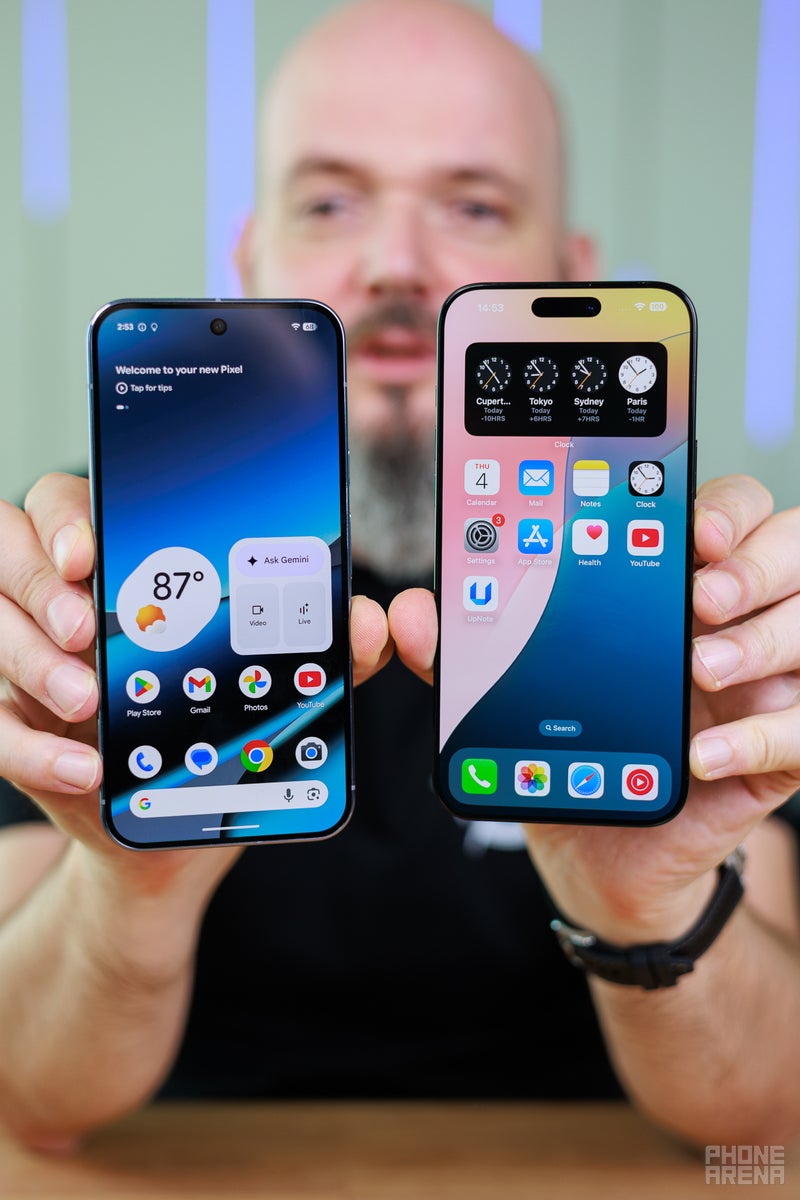
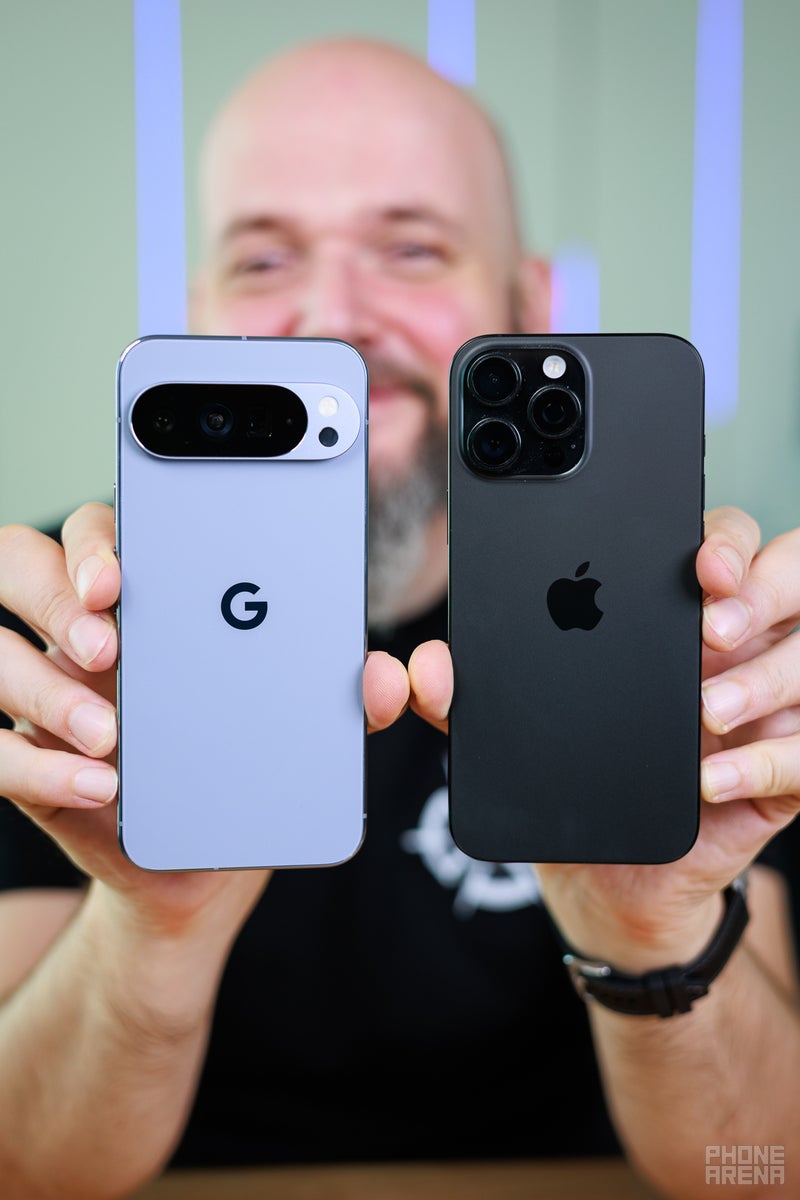
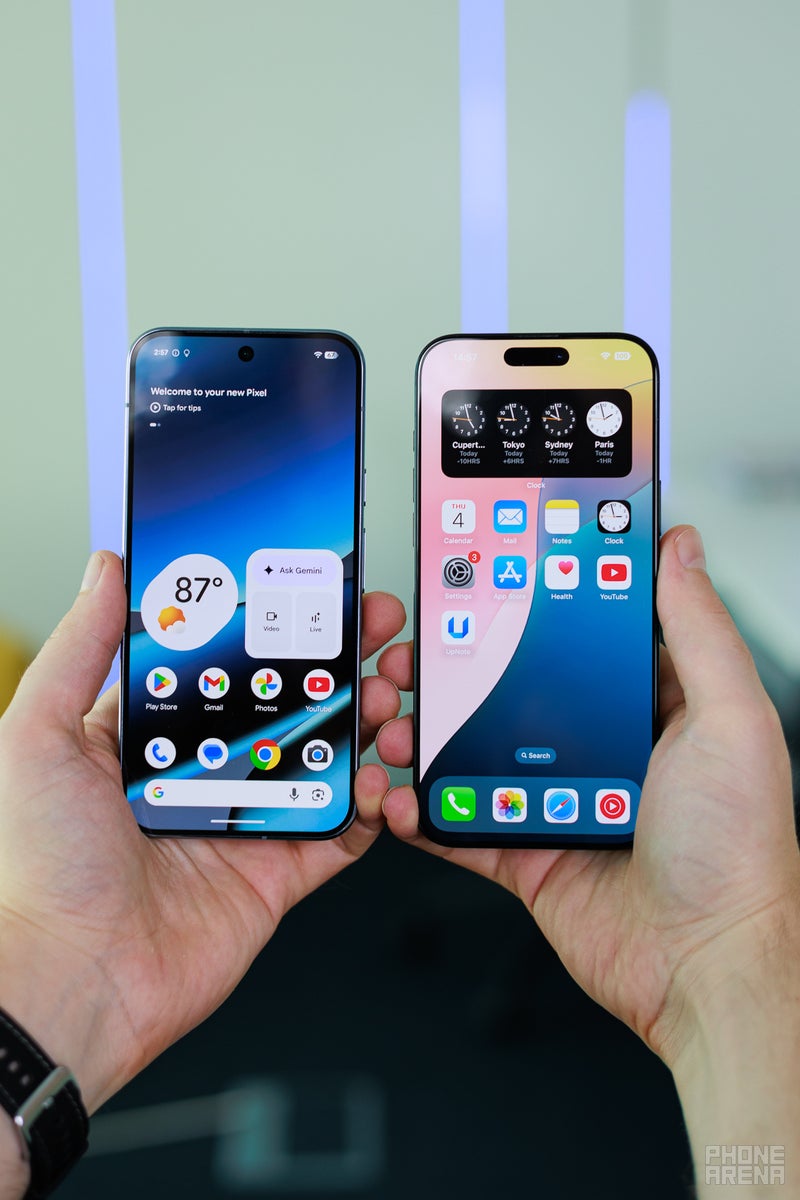

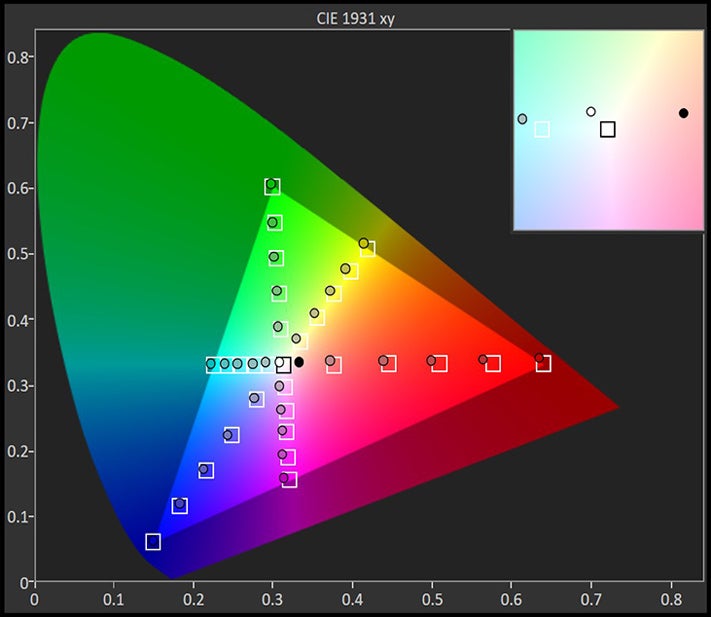





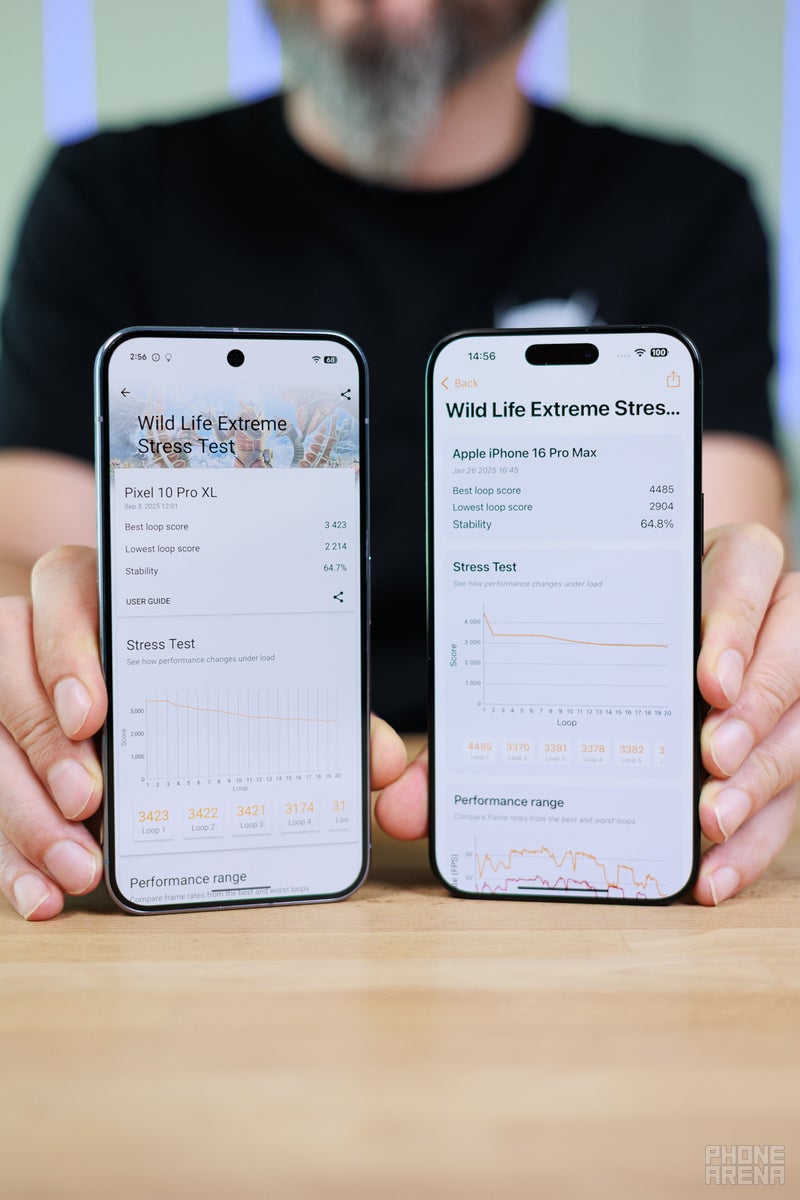
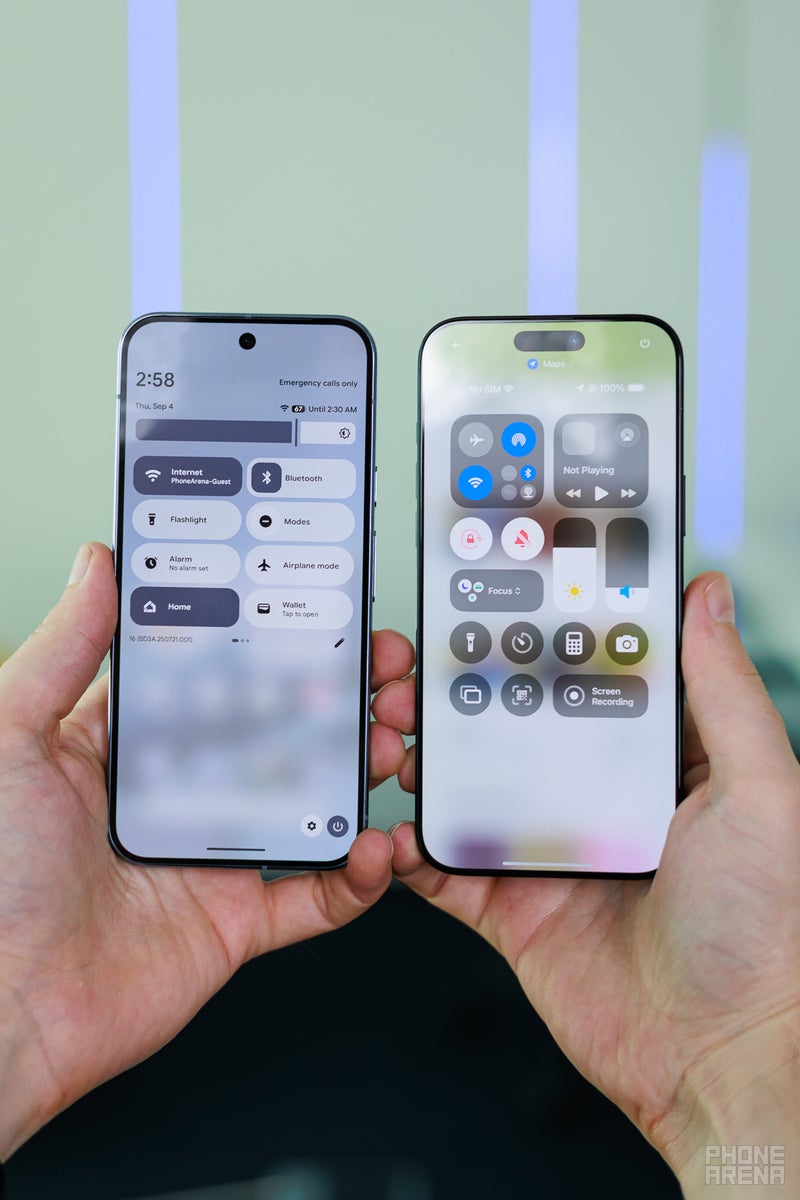
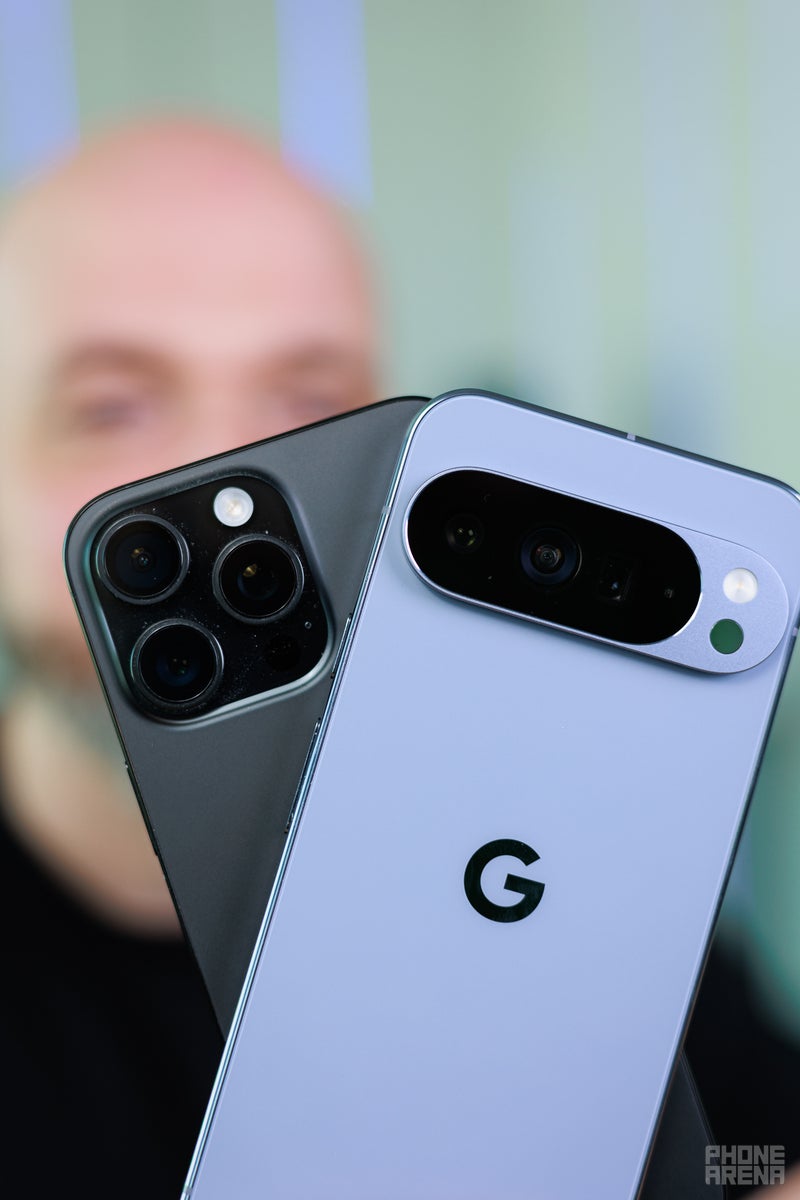
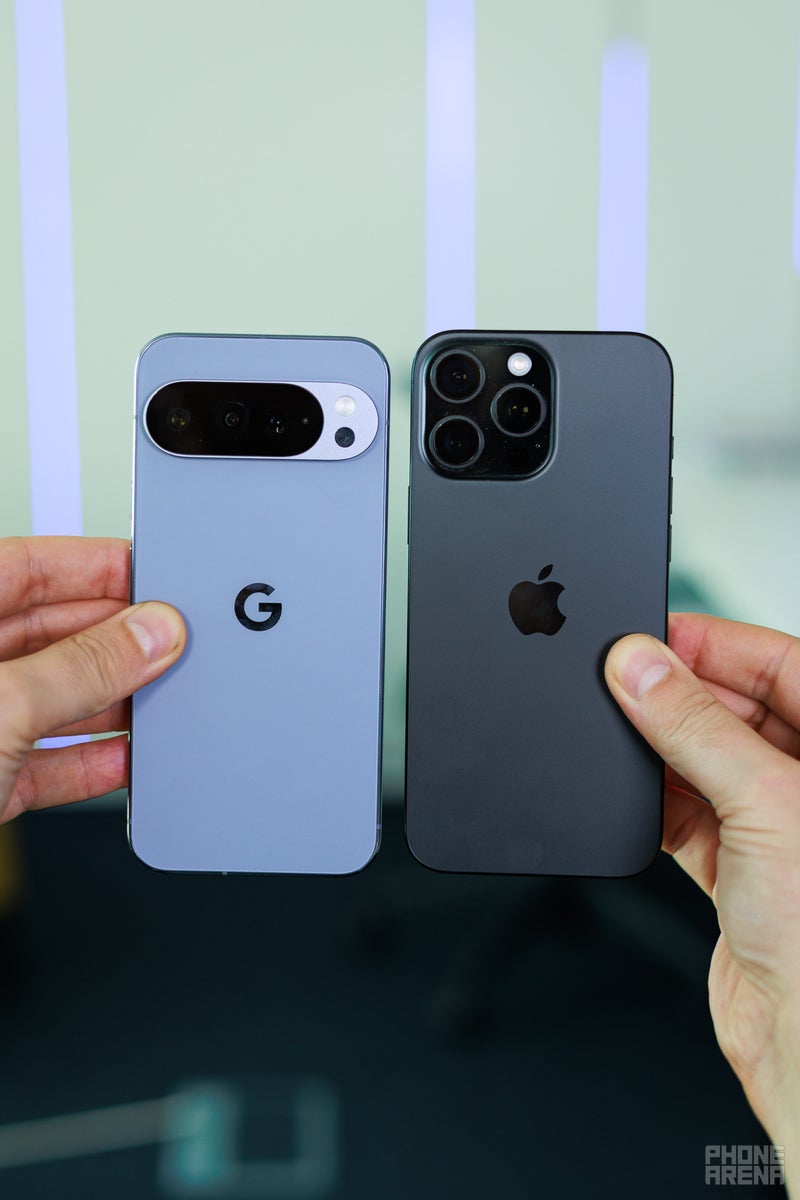










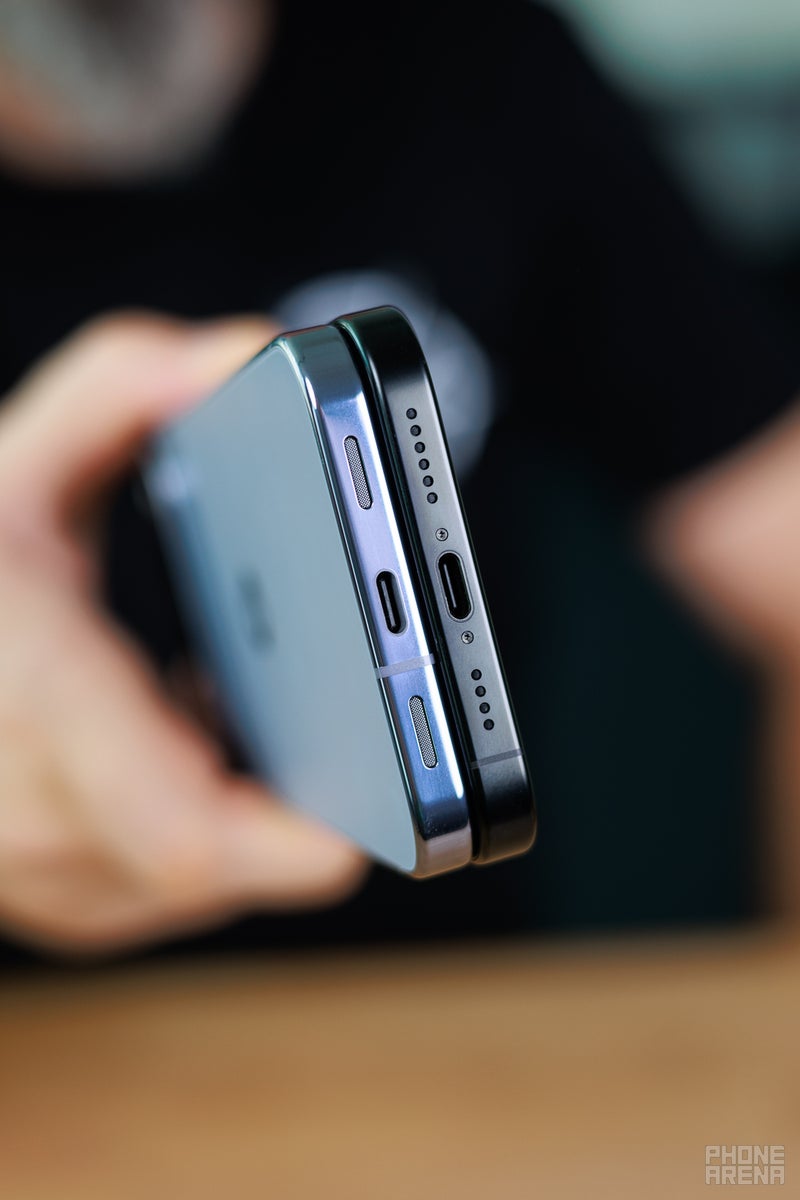
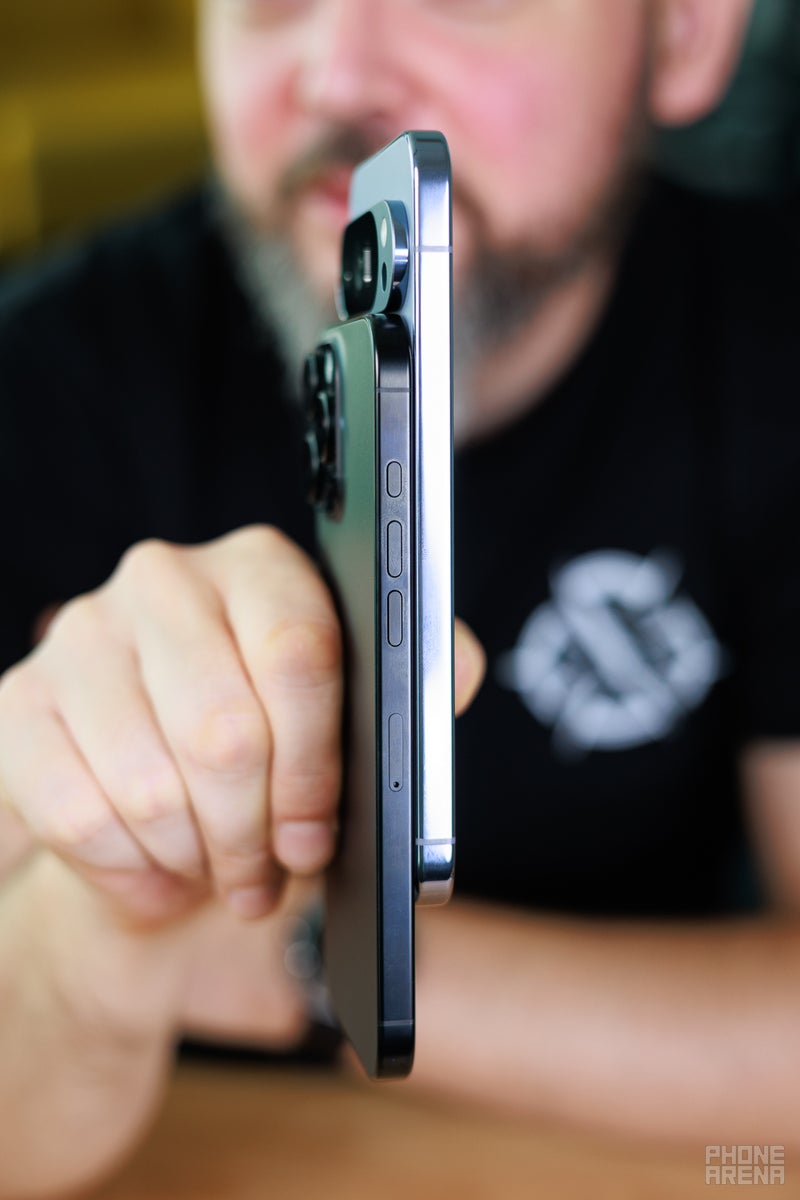


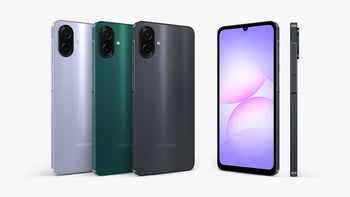
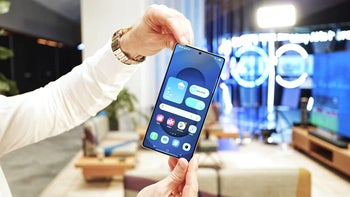
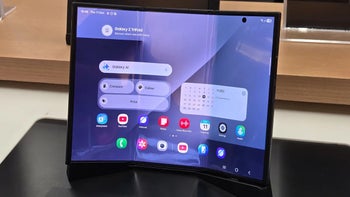
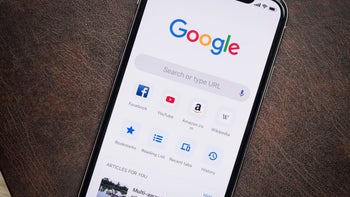
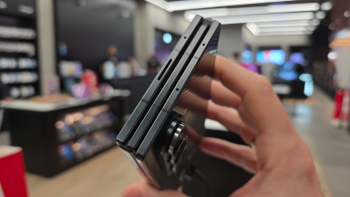




Things that are NOT allowed:
To help keep our community safe and free from spam, we apply temporary limits to newly created accounts: